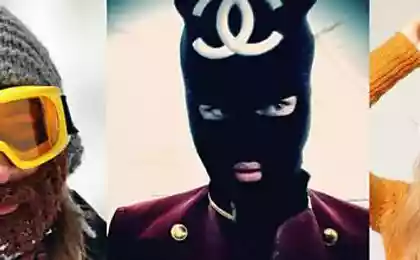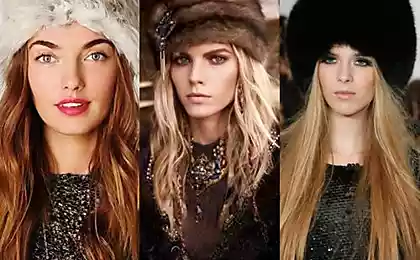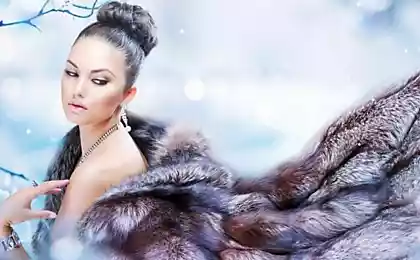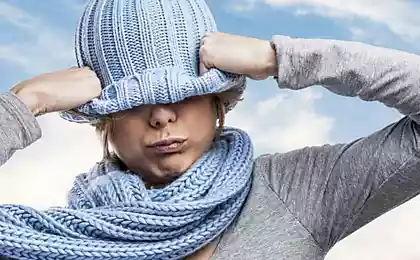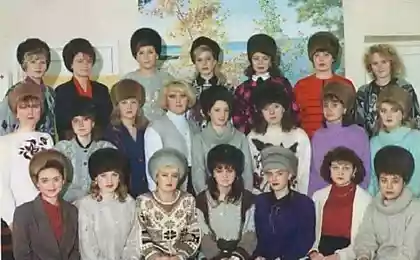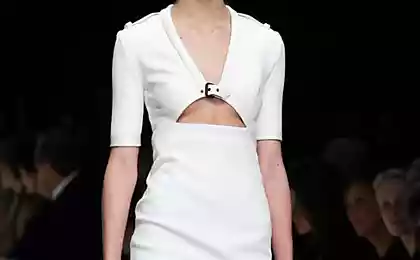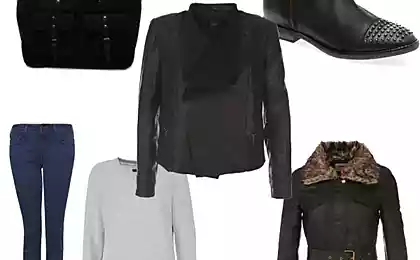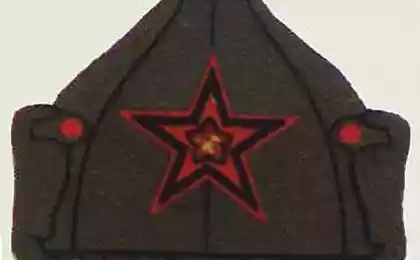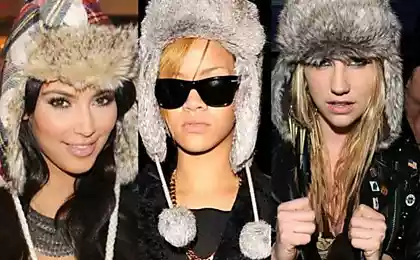3909
Hats with earflaps
Cap with ear-flaps for the Russian people has long been one of the most usual winter hats, and foreigners buying it as a souvenir pay tribute to Russian history. Even now, this cap enjoys wide popularity among young people, as it is excellent saves our head frosty winter. Let's learn about its history.
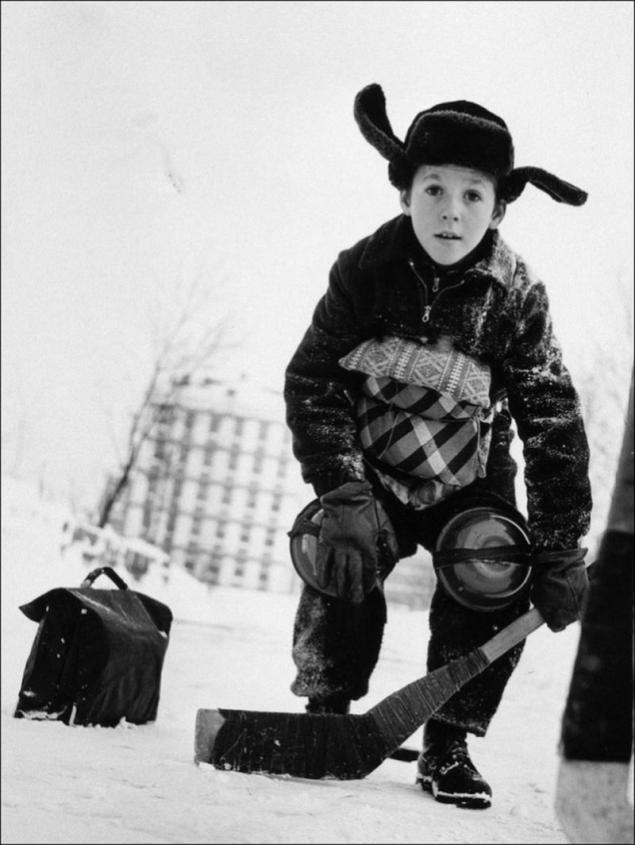
Cap- earflaps descended from the Mongolian Malachi. Mongolian hat was a cap in the form of a cone, cut sheepskin. This men's hat was indispensable in winter: its wide lapels of the protected person and cheeks warrior of the Tatar-Mongol hordes from the wind and blowing snow.
Later sheepskin cuffs Malachai began to cut vertically on the sides, the resulting "ears" could be tied in a warming weather at the back of the rider. From such Malachai and there were the legendary men's fur cap, which became popular in Russia.
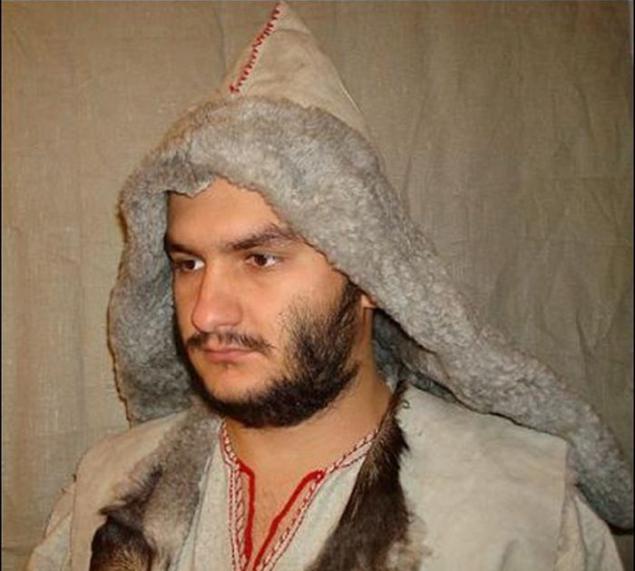
According to an ancient Slavic tradition that is ingrained in Kievan Rus (X -HІІІ cc.) And later in the Grand Duchy of Moscow (-XVII XIV c.), Bareheaded could walk only unmarried girls. Men and married women outside the home was supposed to wear a hat.
It was a very important tradition, leaving his head uncovered was considered shameful, hence the word "goof" - to be in trouble, ridiculous position, allow blunder mistake, inadvertence.
Some fur hats -XVIII XIV centuries. with or without lapels, fully fur or fur trim only became prototypes of modern fur hats.
Closest in style: cap-Kabardinka fur hat and cloak otters Vilchur popular with Cossacks.
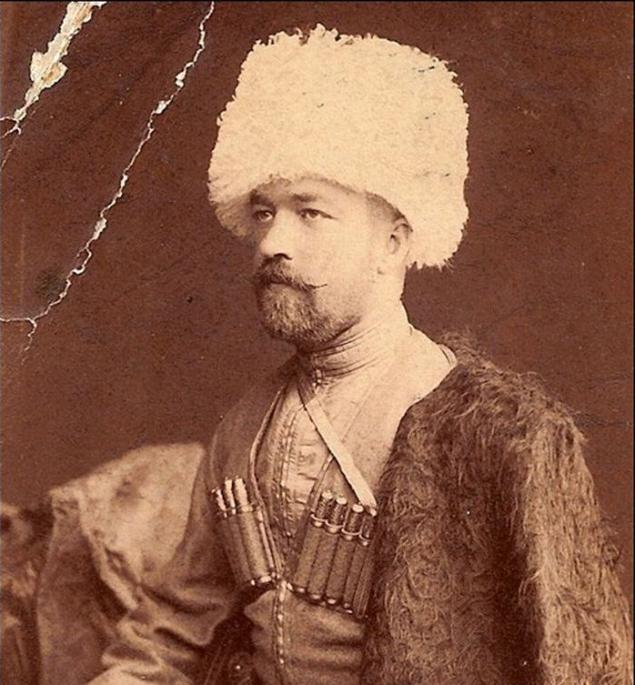
Prior to the XIII century were in fashion so called Treukhov more complex magerki - hats with flaps, with cuts in front, where there is usually fastened clasp or pen with gems and a brush, a decoration called "Sultan". Usually art paintings of that time in such headdresses portrayed the Polish gentry and Ukrainian Hetman.
Ethnographers also lead the most recent version - a hat-malakhai, round with headphones, it was worn in Chernigov province in the late XIX century. This is almost an exact copy of the current earflaps.
However, the revival of hats with earflaps happened after the revolution in 1918-19. in the ranks of the White Army, under the command of Admiral of the White movement and the head of Alexander Kolchak.
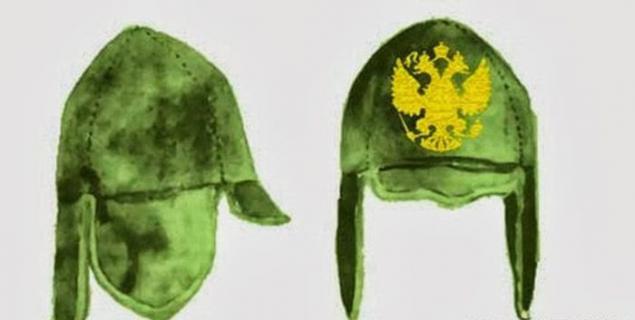
Then cap with ear-flaps called - cap "kolchakovna", but it was not fur, she sewed exclusively from cloth, and she had a visor, is also steering cloth. Although it was believed that kolchakovna - lightweight replica hats Nansen, famous Arctic explorer, Norwegian explorer Fridtjof Nansen.
Times were hard then, uniforms Kolchak's army was imported, ready-made uniforms delivered either from England or sewn from cloth it purchased in Japan. Officers of the White movement, in addition to hats, and wore "kolchakovny" with a badge or a white-green ribbon.
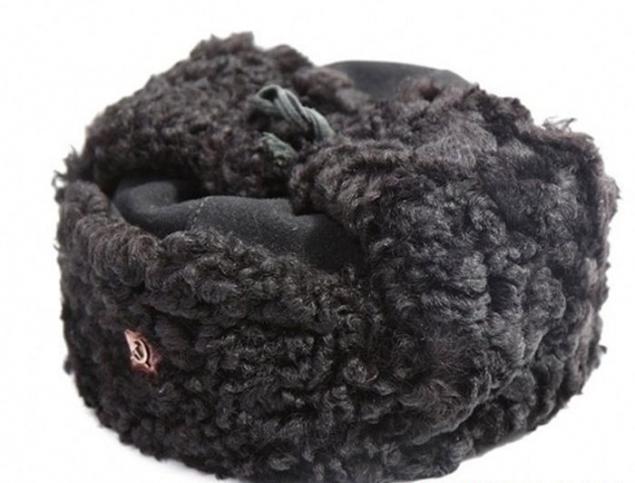
In 1934 he acquired a cap with ear-flaps look familiar to all so far, it began to wear naval forces of the Workers 'and Peasants' Red Army. Cap with ear-flaps black consisting of around, black cloth hood, visor and nazatylnika with headphones. Headphones in the lowered position fastened on the braid, and raised tucked inside nazatylnika.
In accordance with the Order of People's Commissar of the Navy number 426 of 20 October 1939, a cloth cap was replaced with a leather and leather-bound button added.
Caps higher and senior officers were made of lambskin fur black hats and medium commanders and enlistees - fur beaver lamb black.
Since 1940, a hat with earflaps winter hat became the army and police. The headpiece is made of light-colored sheepskin, although the Navy earflaps were black.
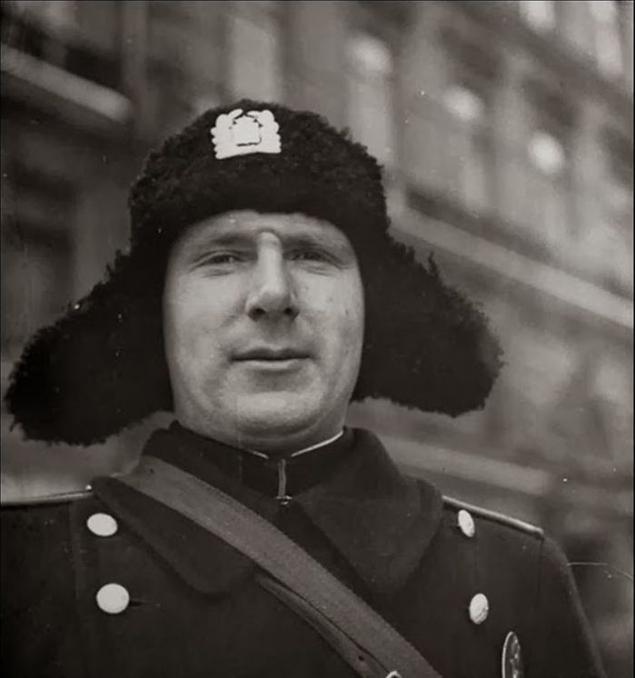
In times of stagnation and restructuring fur cap has become a hot commodity in black marketeers. Foreign tourists are happy to buy or change brought from a fur cap on things.
Famous fashion designers in their autumn-winter collections do not forget about the legendary earflaps.

Today, fur cap is a fashion accessory that can change the mood of the owner, together with the position of her ears, tied to the back of the head or chin, if not teasing the audience trembling when walking is not fastened "ears».

Moreover, the range earflaps is not limited to the classics of the genre, ie hats with earflaps fur. In fashion knitted earflaps, knitted, sheared fur (artificial or natural), etc.

Without a cap with earflaps in their collections is complete Denis Simachev, D & G and Alexander McQueen. Produce caps and in high-tech style: ear flaps fitted with LED-display, which can translate slogans you specify or give rhythm ambient sounds.

After Roman Abramovich bought "Chelsea" cap with ear-flaps became a key element of its uniforms fans. Thus, they expressed their appreciation to the Russian, invest huge amounts of money into the football club.
Interesting facts about earflaps
• Do priblatnennoy Petrograd public in the early 1920s was considered particularly chic finca with ear-flaps - with leather trim astrakhan.
• In Soviet fashion hats on his word said Leonid Brezhnev: 60-70 years of the last century, members of the Politburo were identical reindeer-fawn hat.
Later, there were hats of the muskrat fur and Tuleneva. Brezhnev also introduced the fashion of mink fur cap, which became an attribute of consistency during deep hibernation.
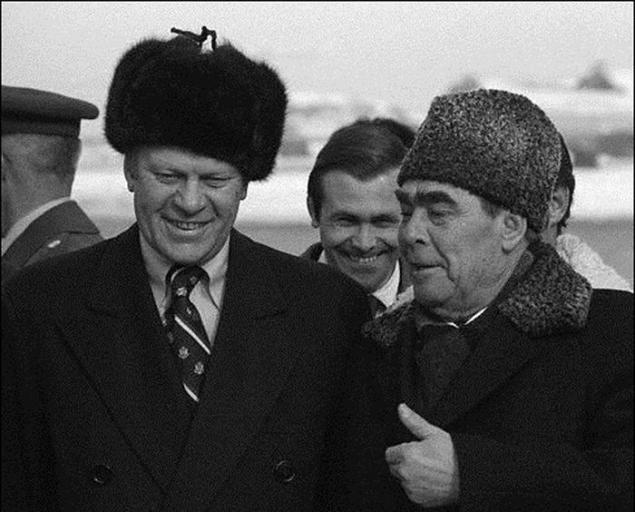
For foreigners, hats with earflaps long rooted to the image of a typical Russian. Tourists coupled with dolls and T-shirts with the face of Lenin's grandfather snapped up buying fur and woolen Treukhov, calling them in the Russian manner shapka or ushanka. These terms are, incidentally, included in the Oxford Dictionary.
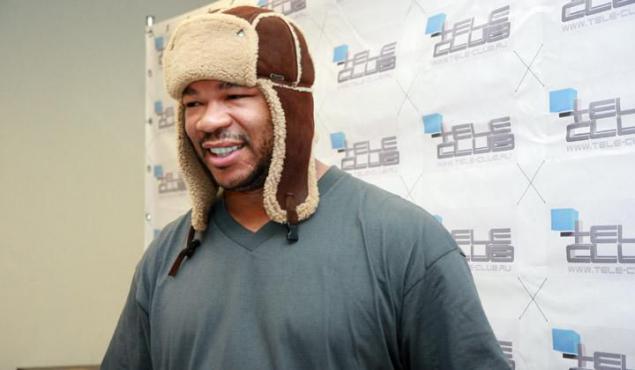
Source:

Cap- earflaps descended from the Mongolian Malachi. Mongolian hat was a cap in the form of a cone, cut sheepskin. This men's hat was indispensable in winter: its wide lapels of the protected person and cheeks warrior of the Tatar-Mongol hordes from the wind and blowing snow.
Later sheepskin cuffs Malachai began to cut vertically on the sides, the resulting "ears" could be tied in a warming weather at the back of the rider. From such Malachai and there were the legendary men's fur cap, which became popular in Russia.

According to an ancient Slavic tradition that is ingrained in Kievan Rus (X -HІІІ cc.) And later in the Grand Duchy of Moscow (-XVII XIV c.), Bareheaded could walk only unmarried girls. Men and married women outside the home was supposed to wear a hat.
It was a very important tradition, leaving his head uncovered was considered shameful, hence the word "goof" - to be in trouble, ridiculous position, allow blunder mistake, inadvertence.
Some fur hats -XVIII XIV centuries. with or without lapels, fully fur or fur trim only became prototypes of modern fur hats.
Closest in style: cap-Kabardinka fur hat and cloak otters Vilchur popular with Cossacks.

Prior to the XIII century were in fashion so called Treukhov more complex magerki - hats with flaps, with cuts in front, where there is usually fastened clasp or pen with gems and a brush, a decoration called "Sultan". Usually art paintings of that time in such headdresses portrayed the Polish gentry and Ukrainian Hetman.
Ethnographers also lead the most recent version - a hat-malakhai, round with headphones, it was worn in Chernigov province in the late XIX century. This is almost an exact copy of the current earflaps.
However, the revival of hats with earflaps happened after the revolution in 1918-19. in the ranks of the White Army, under the command of Admiral of the White movement and the head of Alexander Kolchak.

Then cap with ear-flaps called - cap "kolchakovna", but it was not fur, she sewed exclusively from cloth, and she had a visor, is also steering cloth. Although it was believed that kolchakovna - lightweight replica hats Nansen, famous Arctic explorer, Norwegian explorer Fridtjof Nansen.
Times were hard then, uniforms Kolchak's army was imported, ready-made uniforms delivered either from England or sewn from cloth it purchased in Japan. Officers of the White movement, in addition to hats, and wore "kolchakovny" with a badge or a white-green ribbon.

In 1934 he acquired a cap with ear-flaps look familiar to all so far, it began to wear naval forces of the Workers 'and Peasants' Red Army. Cap with ear-flaps black consisting of around, black cloth hood, visor and nazatylnika with headphones. Headphones in the lowered position fastened on the braid, and raised tucked inside nazatylnika.
In accordance with the Order of People's Commissar of the Navy number 426 of 20 October 1939, a cloth cap was replaced with a leather and leather-bound button added.
Caps higher and senior officers were made of lambskin fur black hats and medium commanders and enlistees - fur beaver lamb black.
Since 1940, a hat with earflaps winter hat became the army and police. The headpiece is made of light-colored sheepskin, although the Navy earflaps were black.

In times of stagnation and restructuring fur cap has become a hot commodity in black marketeers. Foreign tourists are happy to buy or change brought from a fur cap on things.
Famous fashion designers in their autumn-winter collections do not forget about the legendary earflaps.

Today, fur cap is a fashion accessory that can change the mood of the owner, together with the position of her ears, tied to the back of the head or chin, if not teasing the audience trembling when walking is not fastened "ears».

Moreover, the range earflaps is not limited to the classics of the genre, ie hats with earflaps fur. In fashion knitted earflaps, knitted, sheared fur (artificial or natural), etc.

Without a cap with earflaps in their collections is complete Denis Simachev, D & G and Alexander McQueen. Produce caps and in high-tech style: ear flaps fitted with LED-display, which can translate slogans you specify or give rhythm ambient sounds.

After Roman Abramovich bought "Chelsea" cap with ear-flaps became a key element of its uniforms fans. Thus, they expressed their appreciation to the Russian, invest huge amounts of money into the football club.
Interesting facts about earflaps
• Do priblatnennoy Petrograd public in the early 1920s was considered particularly chic finca with ear-flaps - with leather trim astrakhan.
• In Soviet fashion hats on his word said Leonid Brezhnev: 60-70 years of the last century, members of the Politburo were identical reindeer-fawn hat.
Later, there were hats of the muskrat fur and Tuleneva. Brezhnev also introduced the fashion of mink fur cap, which became an attribute of consistency during deep hibernation.

For foreigners, hats with earflaps long rooted to the image of a typical Russian. Tourists coupled with dolls and T-shirts with the face of Lenin's grandfather snapped up buying fur and woolen Treukhov, calling them in the Russian manner shapka or ushanka. These terms are, incidentally, included in the Oxford Dictionary.

Source:
